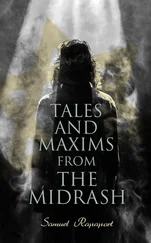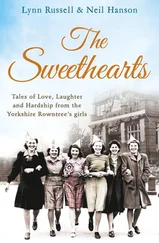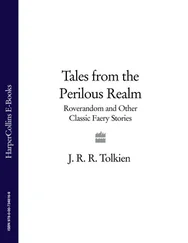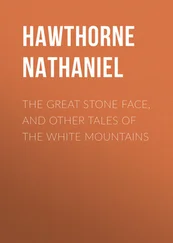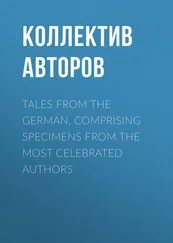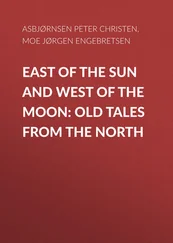Pliny Goddard - Myths and Tales from the White Mountain Apache
Здесь есть возможность читать онлайн «Pliny Goddard - Myths and Tales from the White Mountain Apache» — ознакомительный отрывок электронной книги совершенно бесплатно, а после прочтения отрывка купить полную версию. В некоторых случаях можно слушать аудио, скачать через торрент в формате fb2 и присутствует краткое содержание. Жанр: foreign_antique, foreign_prose, на английском языке. Описание произведения, (предисловие) а так же отзывы посетителей доступны на портале библиотеки ЛибКат.
- Название:Myths and Tales from the White Mountain Apache
- Автор:
- Жанр:
- Год:неизвестен
- ISBN:нет данных
- Рейтинг книги:4 / 5. Голосов: 1
-
Избранное:Добавить в избранное
- Отзывы:
-
Ваша оценка:
- 80
- 1
- 2
- 3
- 4
- 5
Myths and Tales from the White Mountain Apache: краткое содержание, описание и аннотация
Предлагаем к чтению аннотацию, описание, краткое содержание или предисловие (зависит от того, что написал сам автор книги «Myths and Tales from the White Mountain Apache»). Если вы не нашли необходимую информацию о книге — напишите в комментариях, мы постараемся отыскать её.
Myths and Tales from the White Mountain Apache — читать онлайн ознакомительный отрывок
Ниже представлен текст книги, разбитый по страницам. Система сохранения места последней прочитанной страницы, позволяет с удобством читать онлайн бесплатно книгу «Myths and Tales from the White Mountain Apache», без необходимости каждый раз заново искать на чём Вы остановились. Поставьте закладку, и сможете в любой момент перейти на страницу, на которой закончили чтение.
Интервал:
Закладка:
Eagle then said they would set out, for he knew the trail. He requested them to put meat in his mouth as he flew with them, indicating the amount which would be sufficient, for the trail. When they were seated on the Eagle he started down with them, circling around as he flew. A storm of hail fell on them, the hailstones being large with thirty-two points. 6 6 The sacred numbers are 4, 12, and 32.
The eagle protected the boys by covering them with his wings which were rolled back over them. When they had passed through the storm Eagle asked that meat be put in his mouth. When he had been fed he flew away with the boys and went through a hole which was there for him. When he came to the trail he alighted and pointing out the path told them that it led to the house of the Sun. 7 7 This method of making the journey has not been encountered before in this connection, but is an incident in a European story secured from the San Carlos, p. 82, above. The usual account includes a series of obstacles some of which resemble the incidents of a European story. See p. 116 below.
He said that he himself would now turn back home.
The boys went forward until they crossed a shallow valley beyond which was the house, which had projections running out in four directions. When they walked with their eyes closed the house went out of sight, but when they opened their eyes the house settled down again. It did this four times and then it stood firmly. The two boys walked on and coming to the house, stood in front of the entrance. An old woman who was the wife of the Sun sat there.
She advised them to go on wherever they were intending to go, since a person of mean disposition was soon to arrive. The woman who spoke to them was really handsome but she sat there in the form of an old woman. The boys replied that they had been told that their father lived there, and that they had started to come that morning. The woman replied that she did not know who their father was. The boys said that the Sun was their father and they had come to visit him. The woman then asked who had told them that the Sun was their father. They said their mother had told them so. The woman told them that their father would soon return and asked them to be seated on a chair she indicated. When they were seated, the chair kept whirling around with them. When the chair would lift up the woman would make it come down again. When the woman saw the chair come down again she announced herself as nearly convinced they had spoken the truth.
Saying that the Sun was now coming close, she took four silk blankets 8 8 Clouds according to the Navajo account, Matthews, 111; and below, p. 117 .
of different colors which had been sewed together projecting in four directions and rolled the boys up in them. She put them into an inside room. They heard the Sun come back and heard him speak. “Old woman, where are the two men who came here?” he asked. The woman replied: “I have not seen anyone. No one has been here.” “You say there is no one. They must have come, for here are their tracks,” the Sun replied. “You must have been cohabiting with someone else. You say you travel over this broad earth and that you do not visit anyone. You must have been deceiving me about it for two men came in from that trail saying they are your children,” his wife said. The Sun asked that they be brought in, and the woman opened the door, brought in the roll of blankets, and threw it down. The Sun shook the blankets and two men stood up. The Sun spoke: “Hesh, do you consider these to be my children? They do not look like me.” He stood by them and repeated his question, calling attention to their webbed hands and feet and their round ears. “Are you really my children?” he asked them. “Who is called the Sun, I wonder?” the youngest of the boys said, and water fell from his eyes. “Well, maybe you are my children. Sit here and wait,” the Sun said. Their fly looked around and reported that the man was their father. After examining the room everywhere, the inner corners, the windows, and door, the fly told them that ordeals were being prepared for them. He said that soon a blazing sky would be arranged, into which they would be thrown. The fly looked around for downy feathers which he gave the boys.
When the Sun had finished eating he asked that those who said they were the Sun's children should be brought in. He threw them into the place of danger. He pushed them in with lightning which had sharp spines. They turned into downy feathers and stood in front of him again. “It is true,” the Sun said. He threw them in four times, pushing them down. Each time they turned into feathers and came back in front of the Sun as before. The Sun then said he was convinced that they were his children. His wife said: “They told you they were your children, but you have treated them badly.” The Sun replied: “They certainly are my children but I did not believe it before.” The Sun asked his wife to prepare a sweatlodge as soon as they had eaten.
She made a sweatlodge covered with a blue blanket on one side, a black one on another side, a white one on another side, and a yellow one on another side. His wife had the stones heated red hot, like red hot iron. They three went right in, but the Sun only came out again. When the bath had been heated the fourth time the boys were as if they had been boiled. He pushed back the skin which was between their fingers and toes. He fixed for them their lower leg muscles, their knees, their thighs, their biceps, their elbows, and their lower arms. He made the hair of their heads come to their hips, twisting it off at that length. He made their ears, their eyelashes, and their eyebrows, their noses, their mouths, and their faces. He fixed every part of their bodies as it should be. The Sun went out of the bath with the boys and sat with them on the seat where his wife usually sat. They were just like men. 9 9 Thus far the myth seems chiefly to deal with the adolescence ceremony of the boys. The San Carlos account brings in the Sun's father and brothers of the Sun's father as performers of this ceremony, while the Navajo account mentions the daughters of the Sun. See p. 11 above, and Matthews, 112.
When the wife of the Sun came and stood in front of them she looked at them closely, but could not distinguish one from the other. “Move, husband,” she said. The one sitting in the middle moved himself. “You told me you had not been with any woman but you fooled me. These are your children. You must have a wife. Go home with them,” the woman said.
The Sun spoke to his wife, saying that these were his children but that if he went away with them to the earth she would be lonesome. Only today there was a good sunset. “Just now when you said 'no' your eye winked,” he said to her. “I am jealous of what is far away,” she said. The Sun said he would not go, but would talk to his children.
“My boys, shall I give you names?” “Yes, it is not well to be without names,” they replied. Then the Sun said he would name them. He told the older his name would be Naiyenezgani and that he must behave well. 10 10 Other versions make this the second naming of the elder brother. His boyhood name was “Whitehead,” p. 31. Still other names are known to the Navajo. Matthews, 263-264.
He told the other one that he would be named Tobatc'istcini. “When you are upon the earth you will be called so and you will tell them that your father named you that. You shall say, 'He made my name Naiyenezgani.' But you, 'Tobatc'istcini he made my name,' you must tell them.”
The Sun then asked them for what they had come. They told him they had come for his horse, his saddle, his bridle, his halter, his rope, and his saddle blanket. The Sun asked who had told them he had such property. The older one replied that their mother had told them what property he had and had told them that she would be happy if they brought it back to the earth. She said that he (the Sun) would also be happy. The Sun replied that he had no property, no horse, saddle, bridle, halter, rope, or saddle blanket. The fly had told them that the Sun had these, but he looked around again and reported that the Sun had them close by.
Читать дальшеИнтервал:
Закладка:
Похожие книги на «Myths and Tales from the White Mountain Apache»
Представляем Вашему вниманию похожие книги на «Myths and Tales from the White Mountain Apache» списком для выбора. Мы отобрали схожую по названию и смыслу литературу в надежде предоставить читателям больше вариантов отыскать новые, интересные, ещё непрочитанные произведения.
Обсуждение, отзывы о книге «Myths and Tales from the White Mountain Apache» и просто собственные мнения читателей. Оставьте ваши комментарии, напишите, что Вы думаете о произведении, его смысле или главных героях. Укажите что конкретно понравилось, а что нет, и почему Вы так считаете.


